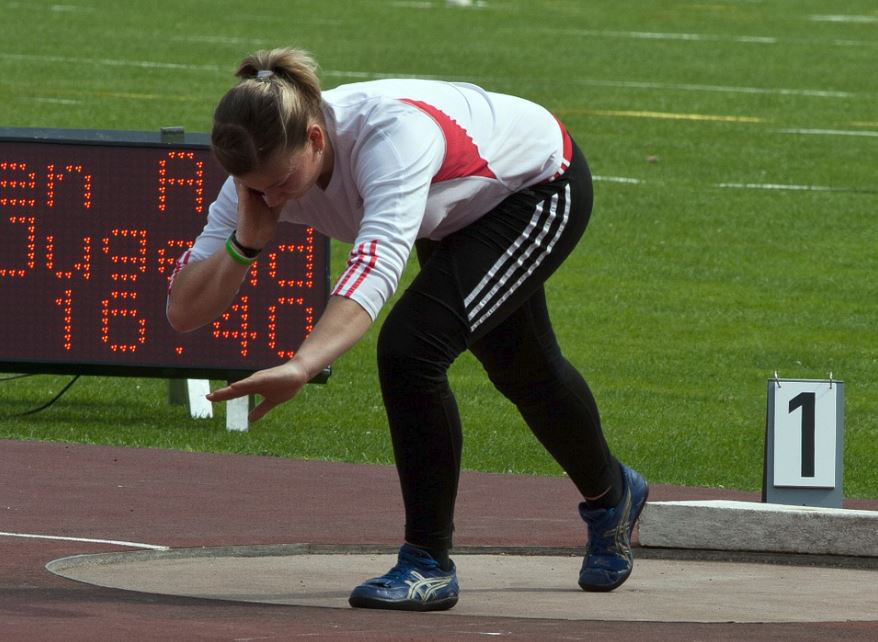Mental and Psychological Aspects of Throwing
By: Tony Dziepak, Track and Field Enthusiast
The mental aspects of competition include gaining good body awareness and coordination, and gaining competition savvy.
Body awareness can be developed through general agility drills, gymnastic exercises, and balancing drills. An athlete with good body awareness can make minor corrections in technique during mid-throw, and is better able to keep from fouling after release. A thrower with good body awareness can sense the position of his/her limbs during the throw if he/she is thinking about them.

You need to be aware of where your body parts are before you can practice with a slightly different body position in order to improve technique.
Here are examples of exercises that will develop body awareness and balance:
All of the running agility drills for 20-30 meters:
• high knees
• straight legs
• butt-kicks
• karaoke
• side shuffle steps
• backwards run
Balancing drills using the balance platform: the one-dimensional balance platform is a 15"x18" rectangular piece of plywood with a rounded 2"x2" rib down the middle. You have to stand on the platform with the rib side down on a flat surface, and keep the platform level without having either edge of the platform touch the ground.
The more advanced 3-dimensional platform is a 24" diameter plywood circle with a 2" diameter semicircular knob in the middle. Not only do you have to balance left-right, but also front-back. Specific drills for these balance platforms:
• standing on a balance platform using arms for balance
• standing on the platform with arms behind head or arms folded
• standing while doing something with the arms, such as tossing a small medicine ball from hand to hand
• doing squats on a balance platform: using arms for balance, arms folded, or arms behind head
• one legged stand with foot across center of balance platform.
Balance drills using a low balance beam (4-6"x8' wood beam elevated 4-6" off the ground)
• Walking on the beam
• backwards walk on the beam
• slow, controlled pirouettes on the beam
• South African drill on the beam
Another aspect of mental/psychological training is the ability to mentally prepare for competition so that you are in the optimal arousal state. You must be neither too hyper (nervous) nor too down.
If you are overly hyper, you will expend nervous energy during warmups and may be depleted of power during your actual throw. If you are not aroused enough you will appear lazy during warmups, and you will not have that reflexive spring that leads to far throws. Competition mental preparedness comes with experience.
My experience is that most high school athletes are not mentally up enough. Most athletes need to wake up more during warmups.
The thrower also has to be mentally prepared for unexpected situations and cannot let unexpected situations distract him from best performance. These distractions can come from missing equipment, during check-in, weigh-in and other hassles with officials and coaches, not being able to adjust to an unexpectedly short or long warmup period, the weather or conditions of the circle or sector, or other logistics. Adaptation to these distractions come with competition experience.
Finally, it is important to come to practice mentally focused. You need to have full attention to what you are doing, and you should also pay attention to your teammates so you can compare and contrast techniques. With experience, you will be able to distinguish what is effective and what isn't in your technique and your teammate's technique. You can then provide feedback and ask specific questions about what you see or sense.
As you are changing and coming to the practice area, you need to mentally leave your other academic subjects and social concerns behind so that you can devote your full attention to practice.
This article is a reprint from The Throwers Page.